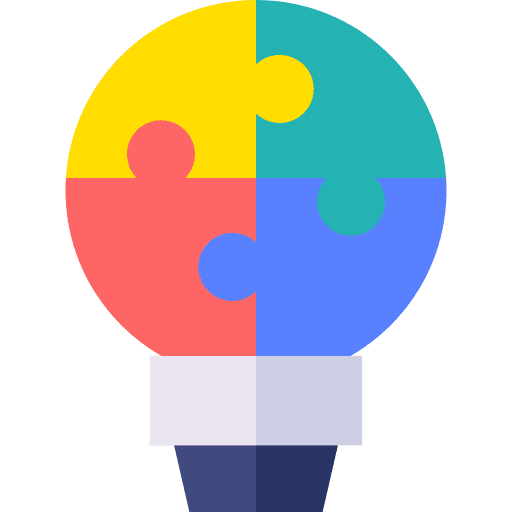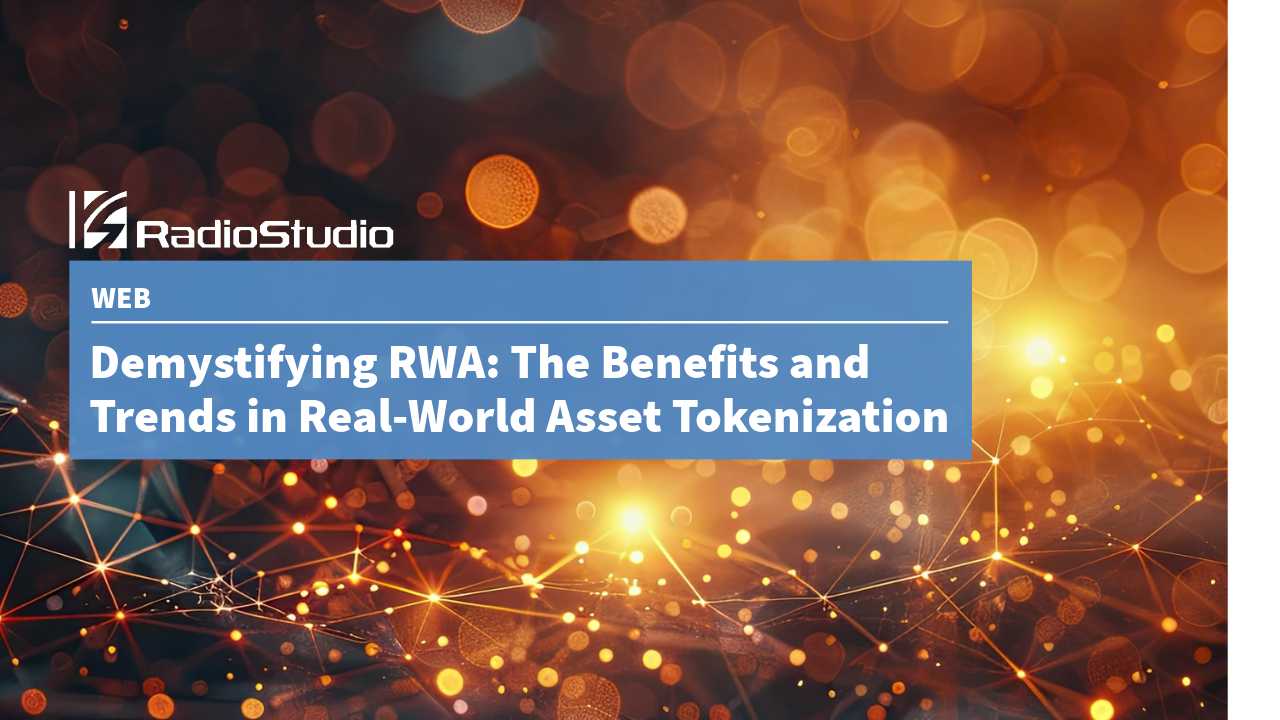Real-world assets (RWA) are things of value in the physical world, like real estate, commodities, or even ownership in a business. What makes them attractive is that now, with advanced technology like blockchain, we can achieve real-world asset tokenization that turns these real-world assets into digital tokens.
This post was originally published in Venly.
Use Case: Real-World Asset Tokenization

Problem Statement
Investing in real-world assets has always been capital intensive with huge upfront investment and high risks.

Realization Approach
Real-world asset tokenization allows high-value, immovable, or movable assets to be tokenized in digital tokens that act like certificates representing ownership or rights to those physical assets.

Solution Space
Digital tokens foster better management and accountability of assets making it easier to trade these valuable assets in the digital realm.
These digital tokens act like certificates representing ownership or rights to those physical assets. It’s like having a digital version of your house deed or a share in a company, making it easier to manage and trade these valuable assets in the digital realm.
RWA bridge the gap between the tangible things we own and the digital possibilities offered by technologies like blockchain.
RWA Tokenization
Real-world asset tokenization is converting these assets into secure tokens on the blockchain to benefit from blockchain technology. This means any valuable asset can be turned into a token and used for transactions on the blockchain.
“Tokenization involves transforming any asset into a digital representation on the blockchain.”
These security tokens can be created to represent assets managed outside the blockchain by custodians or directly embody real-world assets themselves. For instance, a bond can be issued as a token on the blockchain or issued and held outside the blockchain.
By being backed by traditional assets, real-world assets become sustainable and dependable digital asset classes. This puts decentralized finance (DeFi) in direct competition with traditional finance, offering a new way to handle and trade valuable assets in the digital realm.
What Entities can be Tokenized?
Tokenizing real-world assets (RWA) comes with three significant advantages for those assets:
- Efficiency: Enhances performance by achieving more with fewer resources.
- Liquidity: Enables assets to change hands in a clear and organized manner.
- Decentralization of ownership: Facilitates the fair distribution of asset ownership in a clear and organized fashion.
Tangible Assets
- Real Estate
- Trading cards
- Precious metals (Gold, Silver, etc) / Commodities
- Art pieces
- Collectibles
- Machinery
- Inventory
- Cars
Intangible Assets
- Equity
- Derivatives
- Money-market instruments
- Government Bonds
- Trademarks
- Goodwill
- Patents
- Copyrights
Why Tokenize Real World Assets?
1. Efficiency: Tokenizing Real World Assets (RWA) streamlines processes, making the management and transfer of assets more efficient.
Tokenization enhances efficiency by reducing the need for intermediaries, paperwork, and manual processes traditionally associated with handling physical assets. It allows for faster and more transparent transactions, cutting administrative delays and costs.
Storing Real World Assets (RWA) on a blockchain database enhances the transparency, integrity, and cost efficiency of managing these assets.
2. Liquidity: Tokenization enables assets to be easily bought and sold, providing increased liquidity in the market.
Tokenizing real-world assets involves converting them into digital tokens on a blockchain, making them more easily tradable. This process allows for fractional ownership, meaning that investors can buy and sell smaller portions of the asset, making it more accessible and potentially increasing overall liquidity.
3. Transparency: The blockchain technology used in tokenization ensures a transparent and traceable record of asset ownership and transactions.
When RWA are tokenized, the information about their ownership, transactions, and characteristics becomes accessible and visible to participants on the blockchain network. This transparency ensures that anyone with the appropriate permissions can easily verify and trace the history of an asset, promoting trust and accountability.
4. Decentralization: Tokenization allows for a more decentralized distribution of asset ownership, reducing dependence on centralized authorities.
In traditional financial systems, often referred to as “TradFi,” the reliance on intermediary systems involving middlemen, background checks, and regulations comes at the cost of optimal market efficiency and opportunities for asset holders.
Decentralized financial systems (DeFi) aim to decentralize the backend of financial markets by significantly reducing or eliminating the intermediary systems commonly present in traditional finance.
5. Accessibility: The fractionalization of assets makes it easier for a broader range of investors to access and participate in previously exclusive investments.
It unlocks the ability for a broader range of investors to participate in and benefit from owning a share or portion of traditionally valuable assets. Tokenization of RWA allows these assets, which can be anything from real estate and commodities to intellectual property, to be divided into smaller, more affordable units represented by digital tokens.
6. Diversification: Tokenization allows for a diverse range of assets, from real estate to intellectual property, providing investors with more options for building a balanced portfolio. This branches down further into tangible assets and intangible assets.
7. Reduced costs: Digitizing assets and automated processes can lead to cost savings regarding paperwork, intermediaries, and administrative overhead.
When assets are tokenized, administrative processes become more automated, eliminating the need for extensive paperwork, manual record-keeping, and multiple intermediaries involved in traditional systems. This reduction in administrative burden leads to lower operational costs.
8. Global accessibility: Tokenization facilitates global access to assets, allowing investors worldwide to participate in various markets.
When RWA are tokenized and represented on a blockchain, they can be easily accessed by anyone with an internet connection, irrespective of their geographical location. This global accessibility contrasts with traditional financial systems, where certain assets or investment opportunities may be restricted or limited to specific regions or jurisdictions.
9. Innovation: The programmable nature of tokenized assets opens the door to innovative features such as smart contracts, enabling new possibilities for financial instruments.
Some examples include:
- Fractional ownership: Tokenization allows for fractional ownership, enabling investors to own a portion of high-value assets.
- Programmable assets: RWA can be programmed to have specific features, such as lockup periods, voting rights, or revenue-sharing mechanisms. This programmability provides flexibility and customization.
- Smart contracts: Smart contracts, which are self-executing contracts with the terms of the agreement directly written into code, offer innovative ways to automate and enforce contractual agreements related to RWA. They can include features like automated payments, conditions, and governance.
Example 1: Real Estate as RWA 🏠
Imagine you own a piece of real estate, such as a house or an apartment. In the traditional sense, proving your ownership and transferring this property involves a lot of paperwork, legal processes, and intermediaries like real estate agents or legal professionals. Now, let’s consider this real estate asset as a Real World Asset (RWA) in the context of blockchain and tokenization.
Tokenizing real estate involves converting the ownership of that property into a digital token on a blockchain. This token represents your ownership rights to the real estate asset. Instead of relying on traditional documents, the proof of ownership is now stored on a secure and transparent blockchain.
Here’s how it works:
- Token creation: Your real estate property is tokenized by creating a digital token on a blockchain. Each token corresponds to a certain fraction or percentage of ownership in the property.
- Blockchain record: Information about your property and its ownership details is recorded on the blockchain, ensuring transparency and immutability. This means that the record cannot be altered or tampered with.
- Smart contracts: Smart contracts, which are self-executing contracts with the terms of the agreement written into code, can be utilized. For instance, you can program a smart contract to automatically transfer property ownership when certain conditions are met, such as the completion of a sale transaction.
- Transfer of ownership: If you decide to sell a portion of your real estate, you can transfer the corresponding digital tokens to the new owner through the blockchain. This secure and transparent transfer can happen with reduced reliance on intermediaries.
Example 2: Trading cards as RWA 🃏
Trading cards can be considered Real World Assets (RWA) when tokenized on the blockchain. Let’s take the example of physical sports trading cards.
Traditionally, sports trading cards are physical items featuring images of athletes and details about their careers. Each card holds a certain value, and collectors often buy, sell, and trade these cards in the physical world. However, when these trading cards are tokenized on the blockchain, they become digital representations known as non-fungible tokens (NFTs).
In this scenario, each sports trading card is assigned a unique digital token on the blockchain. This token is securely stored, providing proof of ownership and authenticity. Tokenization allows collectors to buy, sell, and trade these digital versions of the trading cards in a decentralized and transparent manner.
A tokenized trading card can prove to be more valuable and cost-effective than a physical card in the following ways:
- Lower transaction costs associated with tokenizing trading cards in decentralized finance. Only a gas fee is applicable when transferring the digital cards.
- Another benefit is that you can use your digital cards as a guarantee when you borrow money. For example, if you need a loan, you can’t take your Pokemon cards to the bank, but you can use your digital cards as security in DeFi platforms.
- The main things that make digital trading cards cheaper are the technology behind them and the fact that there’s no need for physical production or distribution. You can save costs in customs, shipping, logistics, etc.
- Lower or no custody fees for holding real-world asset tokens in decentralized finance platforms.
Because of these possibilities in DeFi, some think that digital trading cards might become more valuable than physical ones. So, in the future, people might be willing to pay extra for digital cards because they can do more things with them.
Summary
If you’re looking to explore the world of RWA tokenization and bring your assets into the digital realm, Venly’s NFT-API is your go-to solution. With features like mass minting (batch minting) and dynamic NFTs, Venly empowers users to seamlessly tokenize their assets, providing a gateway to the future of decentralized finance.


